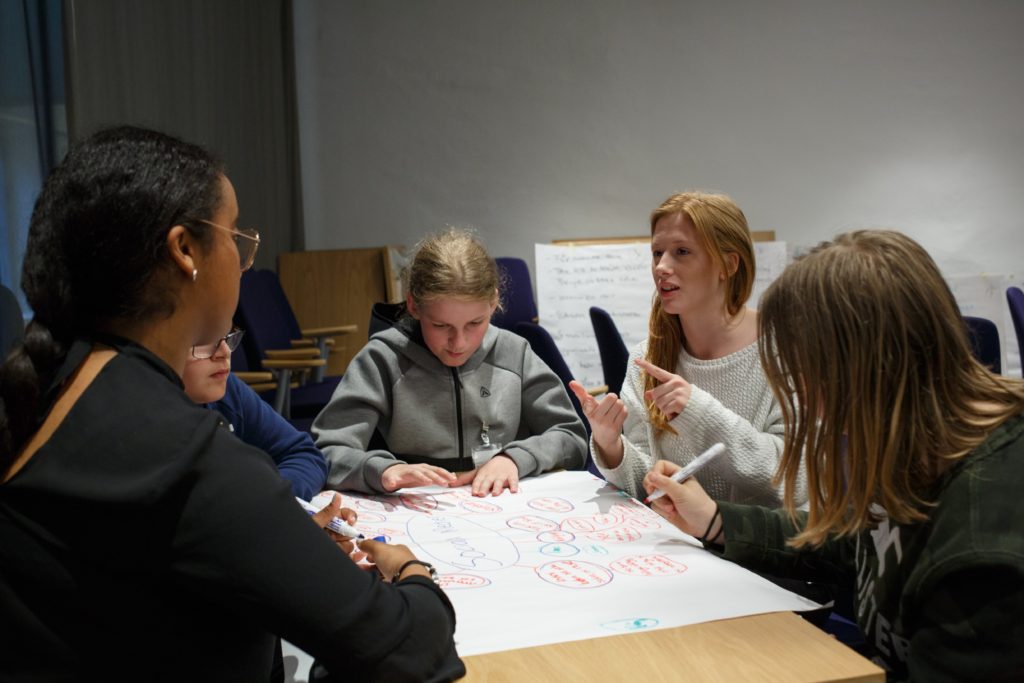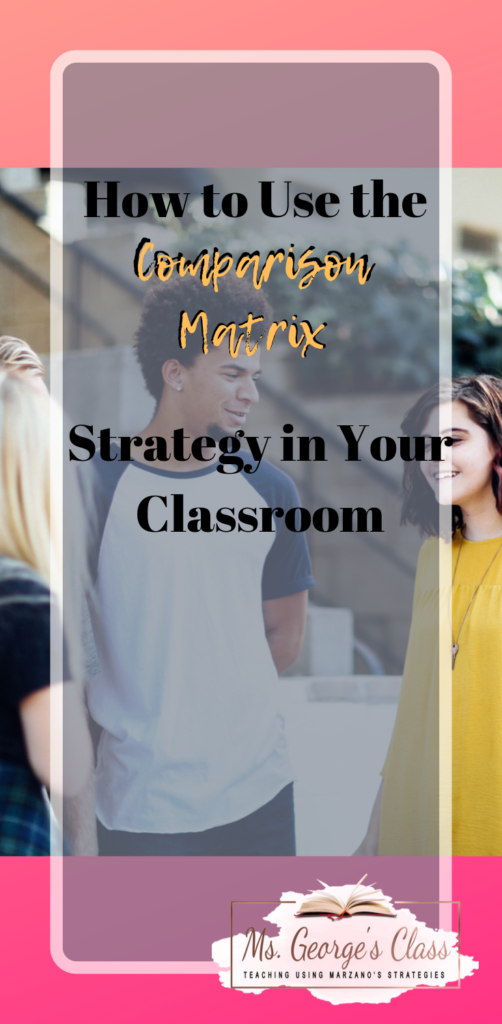
Have you ever used the Venn Diagram strategy with your classes? Did the students complete the exercise quickly because they feel comfortable using it? I have used the strategy countless times, and my students usually work through it quickly. However, I wanted to challenge my students’ way of thinking about similarities and differences. I created the comparison matrix with the help of Classroom Instruction that Works: Research-Based Strategies for Increasing Student Achievement by Marzano et al. The comparison matrix is similar to the Venn Diagram, but the format is different, and it is often used for science experiments. My goals for using the tool were to have students list the similarities and differences between two texts and challenge them to think outside of their normal thinking using the comparison matrix.
Recently, my reading lab students read two texts, both about people taking a stand against injustices within the government system. After reading and writing paragraphs about each passage, they had to compare and contrast the two passages. During this time, I was also reading about the nine high yielding strategies. The second chapter of the book, Classroom Instruction that Works…, is about identifying similarities and differences. Several strategies were discussed, such as the Venn Diagram, the comparison matrix, and analogies. I considered using the Venn Diagram, but I wanted to add some rigor to the assignment. The reading lab students are a mixture of 7 and 8 grade students. They are very familiar with the Venn Diagram, but I knew the comparison matrix would be challenging for them and would cause them to think really hard.
Laying Down the Foundation
Before I distributed the comparison matrix, I made sure everyone had both reading passages. I stood in front of the class and stated that I was introducing a new strategy that would have them thinking. I told them that the work would be hard, but I knew they could do it if they took their time and thought about the answers. I put the comparison matrix under the digital camera with each characteristic box filled out. Then I modeled how to answer the first question. The characteristic was about government, and the two-sample items were the reading passages. The texts were similar because they involved the government. However, they were different because the Daniel Inouye article focused on the national government, while in the second passage, Diego’s focus was on the city council. Most students understood the concept. We completed another row, and students were on target. The students had six characteristics, which I gave them, but they had to identify the similarities and differences for each category.
Students worked quietly on the assignment, and if they did not finish, they could finish it for homework. When I walked around the class, I witnessed students struggling.
The Student’s Viewpoint

I asked the students what went wrong because, during our guided instruction, they were doing so well. They stated that the boxes were too small. Yes, the similarities and differences boxes were too small. What about the content? The students said they did not know which organizations were involved. I replied with the army, Red Cross, and the health department. I also stated the characteristics were from their graphic organizer worksheet they had completed days earlier. There was a sound of euphony from the classes. I offered the students an opportunity to make up the grade using a Venn Diagram.

Lesson Learned
During the guided instruction, students had great answers to the comparison matrix. Some of the answers I did not consider. When I allowed them to work on the assignment by themselves, they did not give their best work effort. They wrote comments such as “One was old, one was a student,” which did not reveal their understanding of the text. The students were correct when they said the boxes were too small to fit details onto the sheet. Would I do the comparison matrix again? Yes. I believe, even though the students did not do well on the first comparison, they were exposed to challenging work. They had to compare and contrast two items using characteristics. They need more practice not only with identifying similarities and differences but understanding characteristics. For example, when I reviewed the characteristic of organizations involved in both texts, they remembered the military, Red Cross, and the health department. I’m not sure if they are unfamiliar with the vocabulary word of organizations or if they ignored the characteristic column. I will be investigating the root of the problem.
The goal was to have students identify similarities and differences using the rigorous comparison matrix. Most of my students earned six points out of twelve because they began listing mirrored differences without using a specific text or textual evidence. This was their first time using the comparison matrix, and the students said it was challenging. The next time I plan this lesson, I will make the boxes labeled similarities and differences bigger, instruct students how to use textual evidence, and have students read and understand the characteristics.
Have you ever used the comparison matrix? What did you find challenging about the assignment? Tell me in the comment section below.




This is a great tip particularly to those new to the blogosphere. Simple but very accurate information… Many thanks for sharing this one. A must read article!
Thank you!